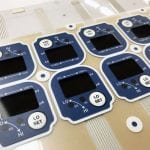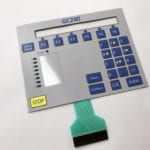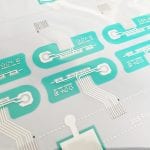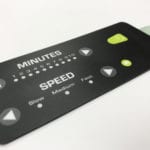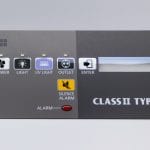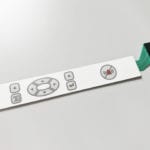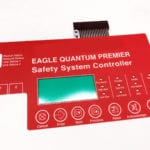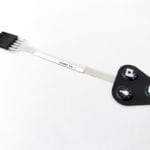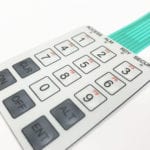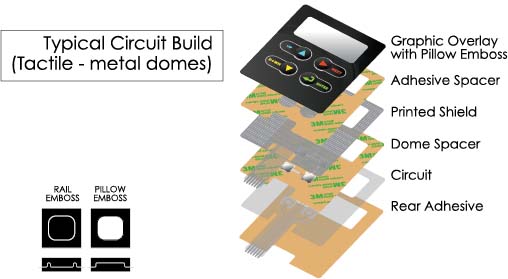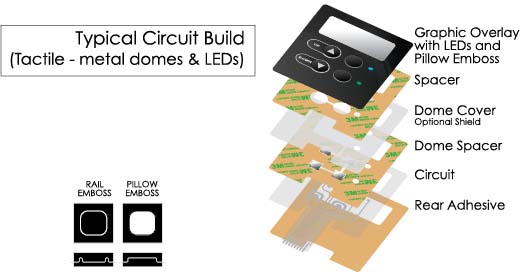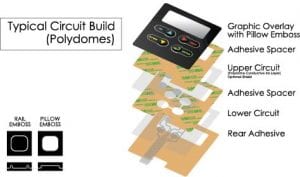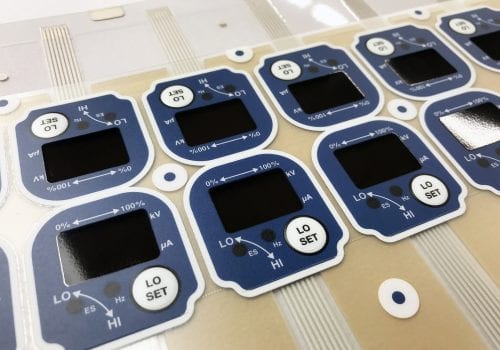
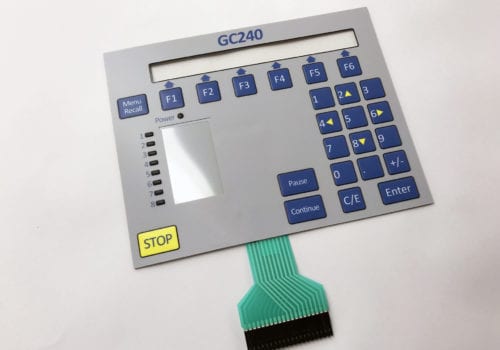
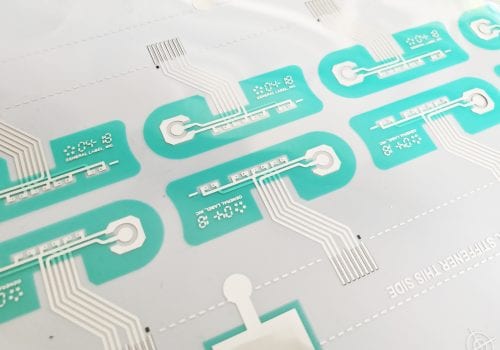
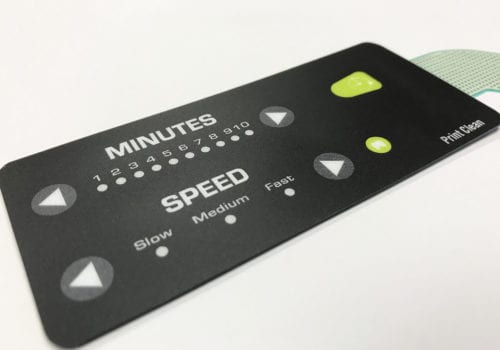
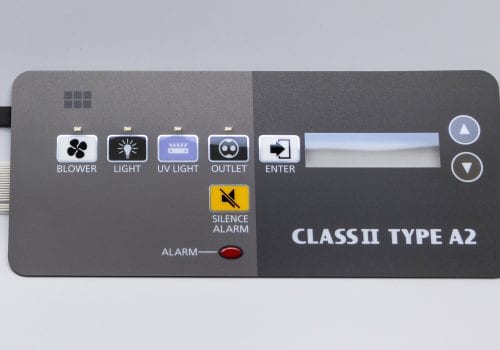
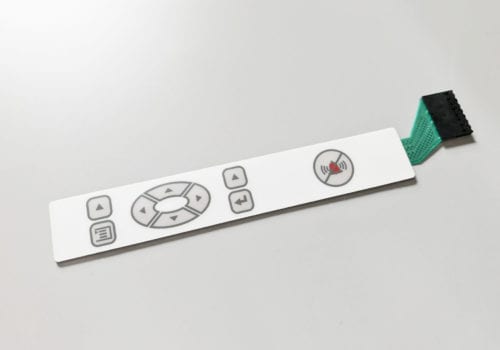
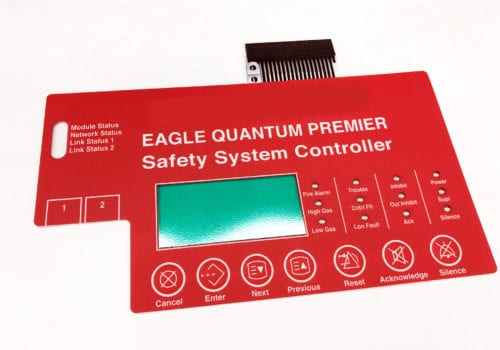
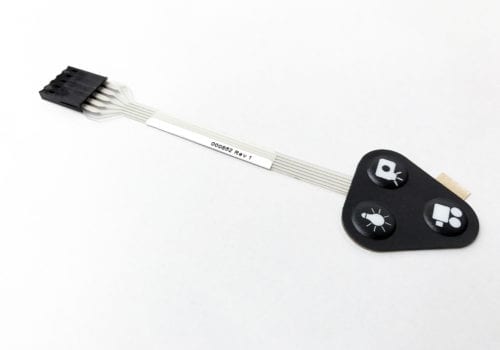

What are membrane switches?
Membrane switches are thin electronic circuits that allow users to interface with a device using pressure. Pushing on a membrane switch closes or opens a circuit. Membrane switches are a class of user interface that allows humans to interact with electronic devices and machinery.
The simplest way to explain what a membrane switch is may be to use an example. The panel on your microwave with numbers, a start/stop button, and more is almost always a membrane switch.
Learn more with our Membrane Switch Terminology Guide
How are membrane switches used?
Membrane switches are used to allow humans to interface with electronics. One of the main advantages of membrane switches is that it’s easy to print graphics onto them – as such, vital information about the operation of the membrane switch can be printed on the switch itself.
Let’s use the example of the microwave again – the information about what each “button” on your microwave does is printed on the button itself. This is one of the things that makes membrane switches so useful – higher information density can be achieved by clearly labeling the function of each element of a panel.
Where are membrane switches used?
Industries of all kinds use membrane switches. These industries include:
- Commercial foodservice
- Commercial refrigeration
- HVAC
- Test and measurement
- Medical electronics
- Portable electronics
- Consumer products
- Agricultural (tractor cabs and farm equipment)
- OEM (Medical)
- Industrial applications
- Laboratory instruments
- Aerospace
- Control panels
- Fitness Equipment
- Telecommunications devices
- Security Systems
As you’ll learn when we discuss the advantages of membrane switches, they can be used anytime a manufacturer wants to create a user interface with an electronic device. They’re especially prized in industries where mechanical switches may risk contamination through dust and debris, and on electronics and machinery where a slim profile is preferred. Depending on your design General Label can build membranes as thin as .041”.
Given the wide variety of different applications for membrane switches, you may see them on small electronics, heavy machinery, and everything in between. Now that you know what membrane switches are, you’ll start seeing them everywhere – they’re an essential part of modern electronics.
Switch option types
There are a number of different types of membrane switches available. Here, we’ll give an overview of the 3 broadest categories of membrane switches, and some of the subtypes available. This is not, however, an exhaustive overview of all of the different types of membrane switches General Label can build. Each of the membrane switches we make is customized to suit the needs of the equipment manufacturer – we’ll take environment, usage, and more into consideration.
Read more in our Design Guide.
Tactile Membrane Switches
Tactile membrane switches are a broad category of membrane switches that provide a tactile response when they are pressed. These switches are commonly used in circumstances where other responses (such as visual or auditory) are insufficient. An example of the use of tactile membrane switches is in medical devices used by people who have visual or auditory impairments.
These membrane switches can also be used in circumstances where the manufacturer would prefer not to have visual or auditory cues when a switch is pressed.
Non-tactile
Non-tactile membrane switches are any membrane switches that do not provide a tactile response when they are pressed. Due to their lack of tactile feedback, most manufacturers choose to include some other form of sensory feedback to accompany the switch, such as LED lighting or sounds. This alerts the user that they’ve successfully interacted with the device.
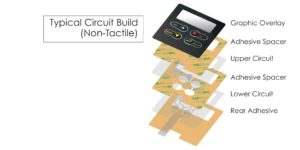
Metal dome arrays
Tactile response is often achieved through the use of metal dome arrays. These durable metal domes range in sizes from 8mm up to 20mm, and can be used for 1 million+ use cycles – more than enough for most applications. As the dome is depressed, it makes a sound, and touches a contact point on the printed circuit board (PCB), allowing electricity to flow through it.
Backlit Membrane Switches
Backlighting technology uses thin profile side-fired LED’s to illuminate discrete areas of the switch. This could be an icon for the power, or a full company logo for stand out branding. Backlit membrane switches help your device stand out, and can provide non-tactile feedback when your device is interacted with (such as the backlighting changing color, or turning on or off).
Capacitive touch
Capacitive touch membrane switches differ from traditional membrane switches in their method of activation. Rather than using pressure to push two layers of circuitry together, these switches use capacitive sensors to detect human touch. To put it more simply, they take advantage of the natural conductivity of the human finger to create an interface.
These membrane switches tend to be more durable than traditional membrane switches, as wear and tear due to pressure are minimized. However, they cannot be pressed with styluses and other devices – they must be pressed by something conductive (like a human finger).
Shielding
Shielding is available on all types of membrane switches. Discharge shielding protects the membrane switch from static electricity. There are several different types of shielding available, including printed shielding (carbon or silver) and aluminum shielding.
Sealed gasket
For added durability, General Label can design any membrane switch with a sealed perimeter gasket. Sealed gaskets remove any pathways for contaminants from your membrane switch, making them the perfect choice for highly sensitive equipment. These membranes can be built to withstand water spray, immersion and are very suited for harsh environments.General Label has built membrane switches to withstand IP67.
Advantages of membrane switches
There are a number of reasons to choose membrane switches over traditional mechanical switches. They can be developed to be:
- Thin profile
- Fully waterproof
- Hermetically sealed
- High temperature resistant
- Chemical and UV resistant
- High rated ESD graphic films that can be used in explosion resistant applications
- Less expensive than circuit board and FPC interfaces
Membrane switches also come in a variety of different colors and textures, with options like the backlighting and tactility described above.
When you choose membrane switches developed by General Label, there are many other advantages. All of our switches are individually tested (not batch tested), to ensure quality and functionality. You’ll also get a dedicated project team to provide full design and engineering support while building your part.
